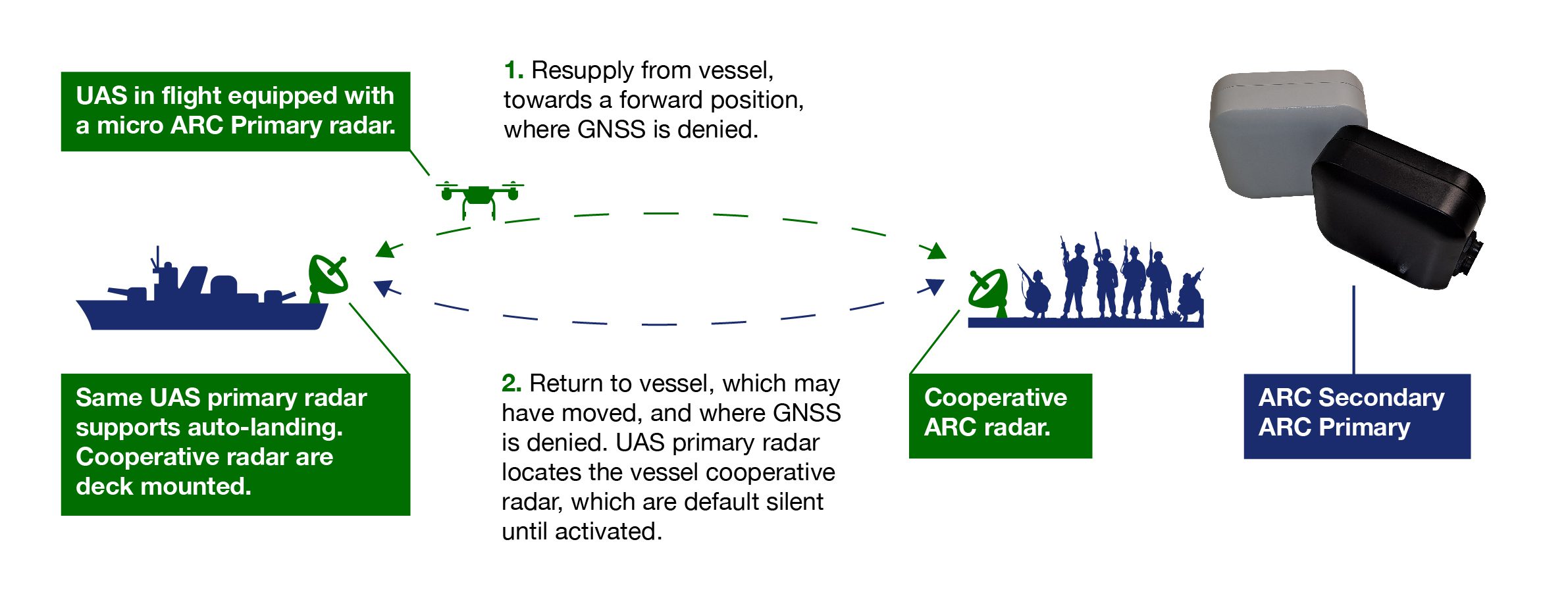ARC-LocateTM
Resilient localisation for Uncrewed Aerial Systems (UAS) is vital if they are to complete their mission.
The UAS needs an onboard sensor that provides positioning while operating in all weather conditions, and especially when satellite navigation systems are temporarily unavailable, occluded by buildings, or have been actively blocked.
Sensoriis have developed and patented Active Radar Cooperating or ARCTM, two or more radars cooperating with each other, that provide a localisation capability based upon direct radar range measurement, and is highly resilient to jamming mechanisms.
The radar is also unaffected by poor visibility, lighting conditions and bad weather, unlike camera-based localisation.
Our ARC-Locate™ is designed for high visibility between one or more compatible ARC radars. A primary will report the range, bearing and elevation to other ARCs, whilst ignoring radar reflections from the background infrastructure.
This allows our customers to achieve high precision measurement of landing pads (onshore and offshore) for autonomous control; locate a journey endpoint within centimetres, without satellite navigation (GNSS); and provide assured positioning while a drone surveys infrastructure.
With our ARCTM technology, we can also enable the precise monitoring of the position of the UAS relative to a travel zone or flight corridor, also known as zonal tethering. This allows the system operator to restrict the UAS to a defined location, especially useful where GNSS may be unavailable.
A last mile resupply air (or ground) vehicle can precisely locate the without the need for satellite positioning or inter communication at either end if the forward position has a Sensoriis ARC TM radar. The UAS can then locate the endpoint and fly resupply missions. Equally the UAS can return to its origin through guidance from a further ARCTM radar.
In the case of a vessel at sea the endpoint may have moved, and ARCTM finds the current position as opposed to that at take-off.

Each ARCTM device can be configured with a unique code that is reported over the radar carrier frequency. This supports ‘Default Silent’ technology as the ARCTM on the ground remains silent, non-transmitting, until interrogated by a compatible radar in a recognised encoded band from an approaching UAS. This is critical where electronic radio stealth is required, such as the last mile resupply in military use cases.